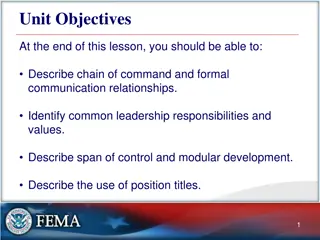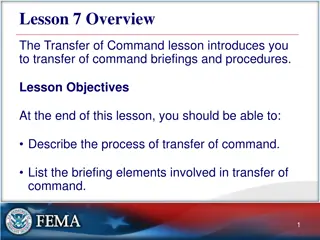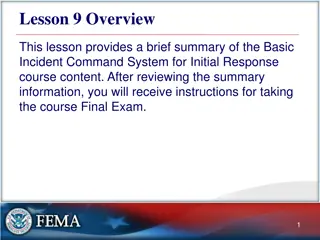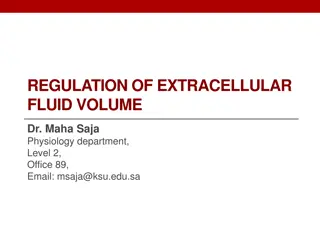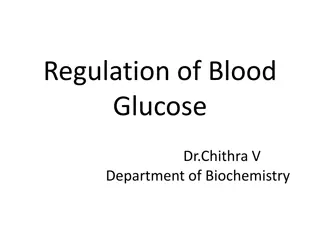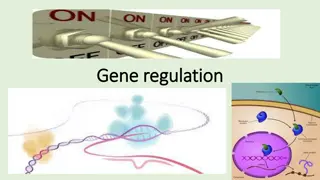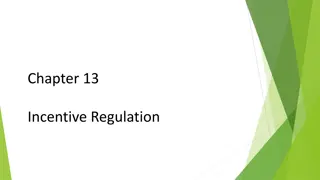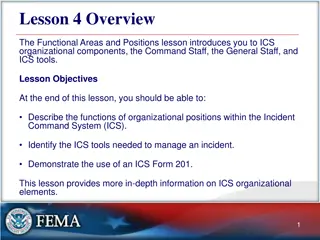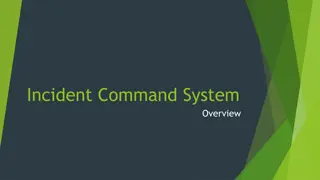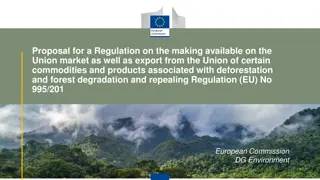Understanding the Command and Control Approach in Regulation
Command and Control (CAC) regulation involves direct legislation to govern industries and activities, setting standards and imposing sanctions for non-compliance. While providing clear outcomes, this approach may limit firms in finding cost-effective methods to reduce pollution. Market-based instruments offer flexibility and financial incentives, encouraging behavior through market signals. These instruments, such as emission taxes and tradable permits, aim to address environmental issues effectively.
Download Presentation

Please find below an Image/Link to download the presentation.
The content on the website is provided AS IS for your information and personal use only. It may not be sold, licensed, or shared on other websites without obtaining consent from the author. Download presentation by click this link. If you encounter any issues during the download, it is possible that the publisher has removed the file from their server.
E N D
Presentation Transcript
TOPIC: The Command and Control Approach Prepared by Anindita Chakravarty
Introduction Command and Control (CAC) Regulation can be defined as the direct regulation of an industry or activity by legislation that states what is permitted and what is illegal. The command is the presentation of quality standards/targets by a government authority that must be complied with. The control part signifies the negative sanctions that may result from non-compliance e.g. prosecution. CAC encompasses a variety of methods i.e., influencing behaviour through: laws, incentives, threats, contracts agreements (eg Kyoto Protocol)
Strengths and weaknesses of approach WEAKNESS: They limit the firm s ability to find the most cost-effective way to continue production while reducing pollution. Often times it is hard or impossible for the government to know the cost structures of each of the polluting firms. This knowledge is required if the regulation is to beefficient. STRENGTH: It is believed by many that the primary advantage of using command-and-control mechanisms is that they provide a clear outcome, while being comparatively compliance. Therefore, it is possible that an emissions reduction goal can be reached; if not, the violators will pay a fine. simple to monitor
Introduction Market-based instruments are regulations that encourage behavior through market signals rather than through explicit directives regarding pollution control levels or methods In terms of the market-based instruments, which provide great flexibility and financial incentives, they can spur producers to adopt the new technologies and facilities to pursue better results in order to solve the environmental problems. People will accept a policy more easily if either the benefits increase or the cost decreases. One may pour their wastes to a close-by river if they do not need to pay for that Eg: Emission Tax, Tradable Permits, Liability Laws etc. We will discuss them in detail in the up-coming classes



